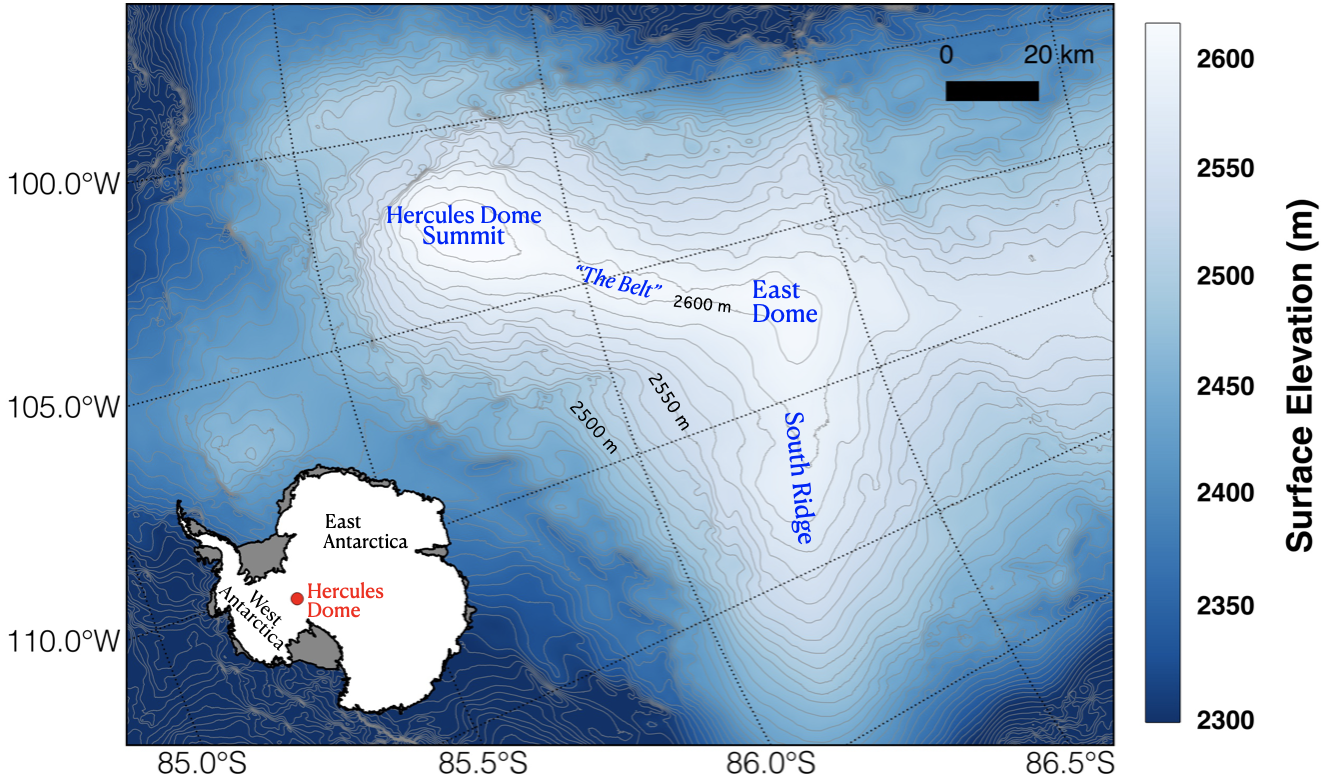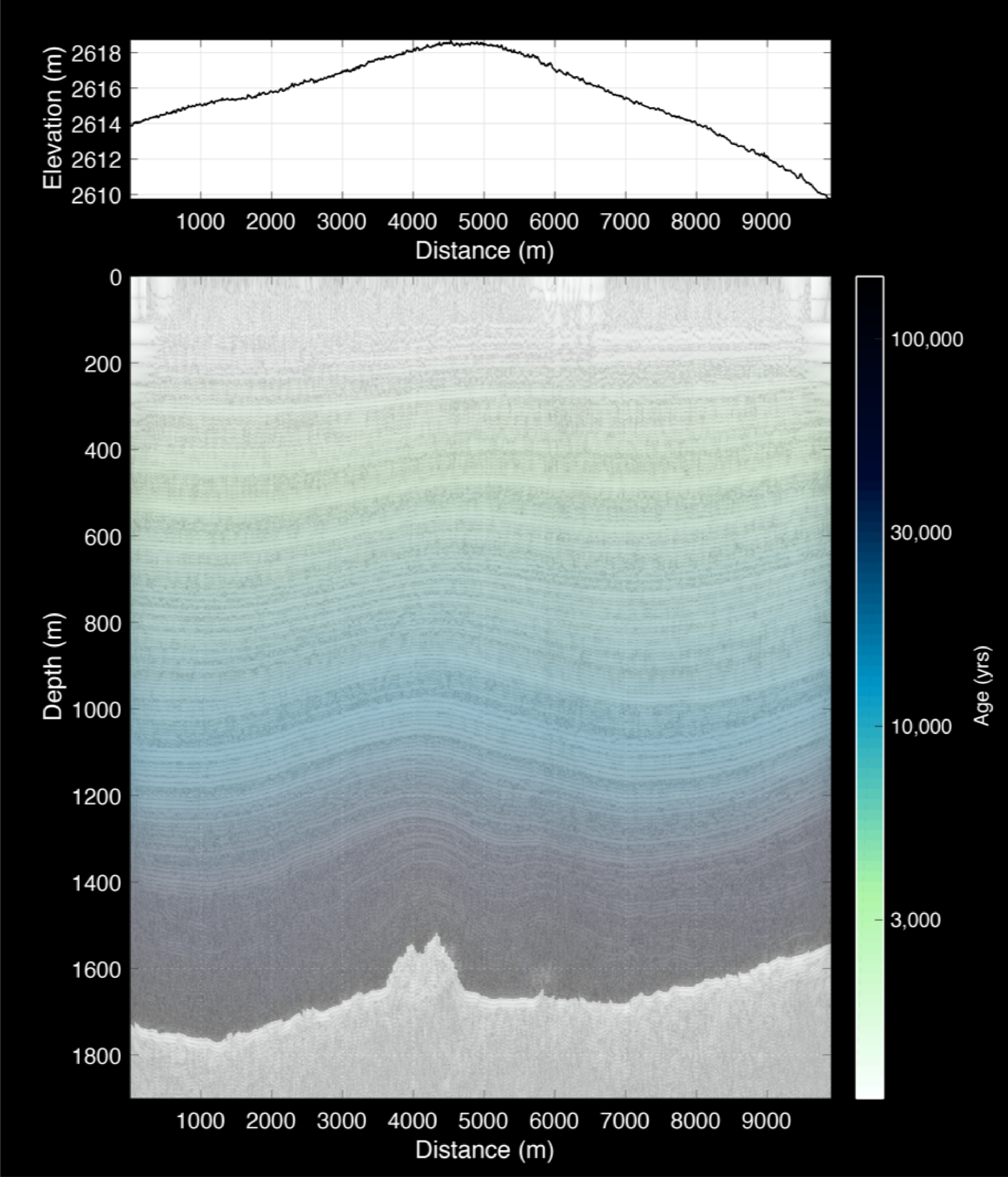Hercules Dome is located at ~86°S, 105°W, between the Horlick and Thiel Mountains, about 400 km from the South Pole. It was first identified as a promising site for a deep ice core on the basis of radar and shallow ice-core data collected by US International Trans‐Antarctic Scientific Expedition (ITASE) traverse in 2002-2003 (Jacobel and others, 2005).
Hercules Dome actually comprises three distinct features, informally known as the “Hercules Dome Summit”, “East Dome” and “South Ridge”, which are anchored by subglacial ridges. Ongoing site-selection work with ice-penetrating radar, GPS surveys, and ice-flow modeling, show that Hercules Dome Summit is the best site (see Fudge et al. 2022 and Hills et al., in preparation, 2023).
Getting people and equipment to Hercules Dome for drilling is a major operation, which will likely involve at least one tractor-traverse all the way from McMurdo Station, about 1600 kilometers away. For much of the distance, we will be able to take advantage of the well-established route from McMurdo to South Pole.
The current logistics timeline has the first traverse to Hercules Dome starting no sooner than the 2027/2028 field season. That places the first full drilling season in austral summer 2029/2030. View the project timeline for the latest schedule of anticipated activities. In the meanwhile, we’ll be working with the National Science Foundation, the Antarctic Support Contractor, and the NSF Ice Drilling Program (IDP) engineers at the University of Madison-Wisconsin, in planning logistics.
Because drilling will not begin for a few years, there is ample time to consider getting involved in the science and in other aspects of the project.

